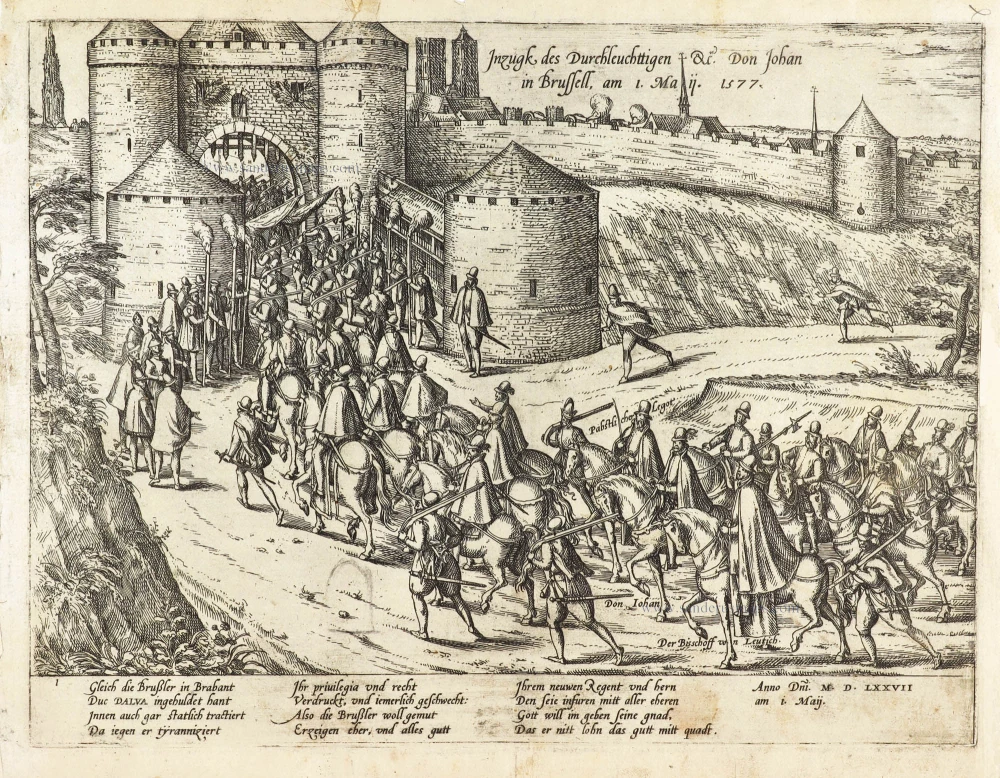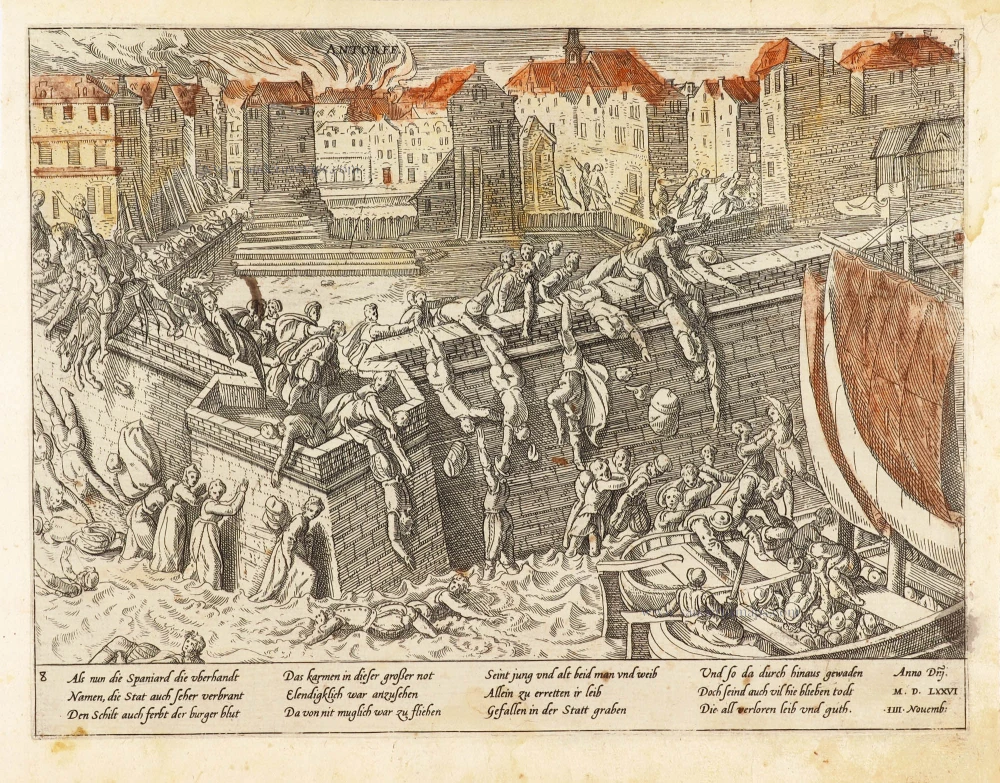The entrenchment of Willebroek conquered by the States General, 19 September 1579, by Frans Hogenberg. 1583-1612
Frans (Franz) Hogenberg (1535-1590)
Frans Hogenberg was a Flemish and German painter, engraver, and mapmaker. He was born in Mechelen as the son of Nicolaas Hogenberg.
By the end of the 1560s Frans Hogenberg was employed upon Abraham Ortelius's Theatrum Orbis Terrarum, published in 1570; he is named as engraver of numerous maps. In 1568 he was bannend from Antwerp by the Duke of Alva and travelled to London, where he stayed a few years before emigrating to Cologne. There he immediately embarked on his two most important works, the Civitates published from 1572 and the Geschichtsblätter, which appeared in several series from 1569 until about 1587.
Thanks to such large scale projects as the Geschichtsblätter and the Civitates, Hogenberg's social circumstances improved with each passing year. He died as a wealthy man in Cologne in 1590.
Wie die Staten die gwaltige festung zu Willebrouck in Brabant erhalten
Item Number: 29942 Authenticity Guarantee
Category: Antique maps > Europe > Belgium - Cities
The entrenchment of Willebroek conquered by the States General, 19 September 1579.
Title: Wie die Staten die gwaltige festung zu Willebrouck in Brabant erhalten
Anno Dñj. M.D.LXXIX. Am XIX. Septembris
Engraver: Frans Hogenberg.
Date of the first edition: 1583.
Date of this print: 1583-1612.
Copper engraving, printed on paper.
Image size: 200 x 265mm (7.87 x 10.43 inches).
Sheet size: 235 x 290mm (9.25 x 11.42 inches).
Verso: Blank.
Condition: Excellent.
Condition Rating: A+.
From: Hogenberg Frans, Geschichtsblätter. Köln, 1583-1612.
Frans (Franz) Hogenberg (1535-1590)
Frans Hogenberg was a Flemish and German painter, engraver, and mapmaker. He was born in Mechelen as the son of Nicolaas Hogenberg.
By the end of the 1560s Frans Hogenberg was employed upon Abraham Ortelius's Theatrum Orbis Terrarum, published in 1570; he is named as engraver of numerous maps. In 1568 he was bannend from Antwerp by the Duke of Alva and travelled to London, where he stayed a few years before emigrating to Cologne. There he immediately embarked on his two most important works, the Civitates published from 1572 and the Geschichtsblätter, which appeared in several series from 1569 until about 1587.
Thanks to such large scale projects as the Geschichtsblätter and the Civitates, Hogenberg's social circumstances improved with each passing year. He died as a wealthy man in Cologne in 1590.




